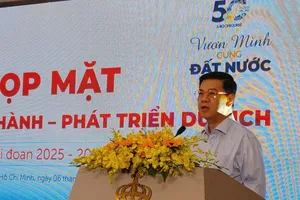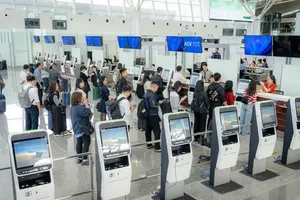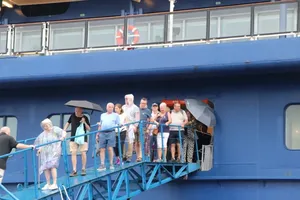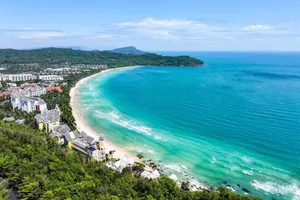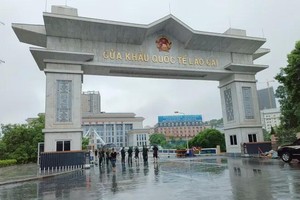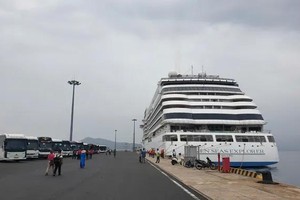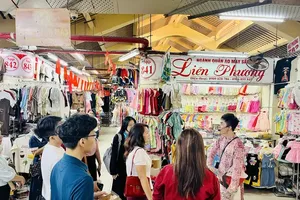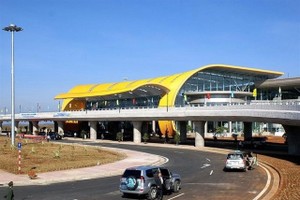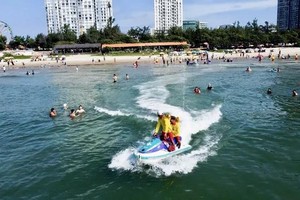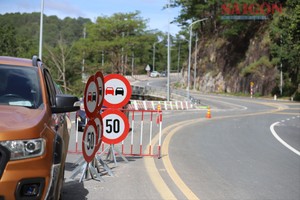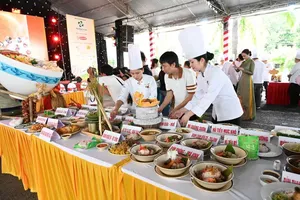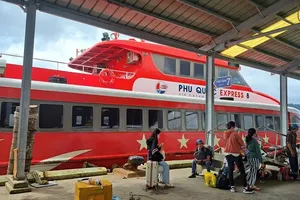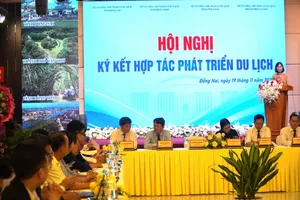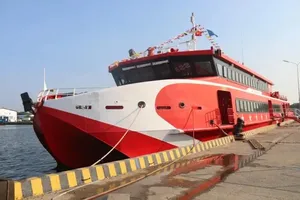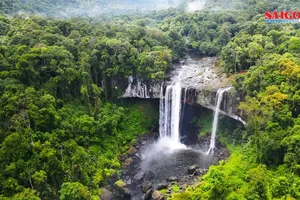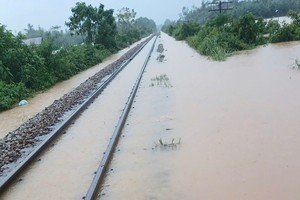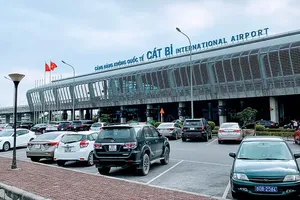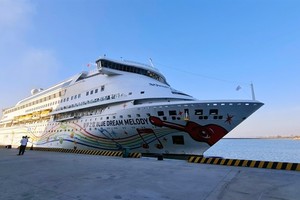However, to fully unlock the region’s sea tourism potential, the authorities must first tackle pressing environmental challenges, most notably, the persistent problem of ocean waste and invasive water hyacinths washing ashore.
Waste and water hyacinths choke Vung Tau’s beaches
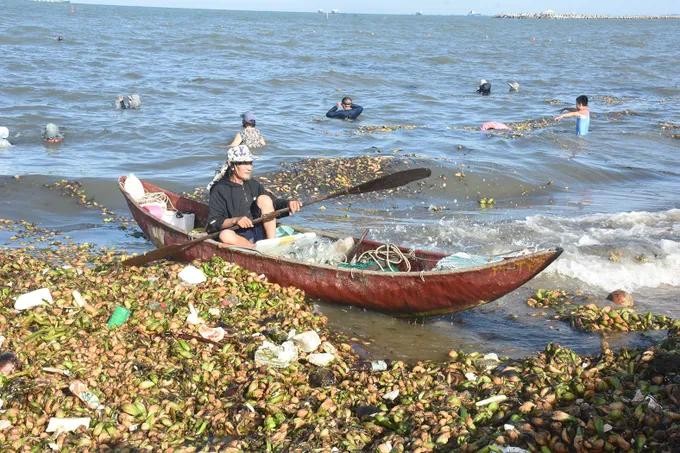
Dau Beach, a popular high-end tourism hub in Ba Ria–Vung Tau, is known for its upscale restaurants, cafés, and seaside resorts, and has long attracted both domestic and international visitors. However, the recent surge in ocean waste washing ashore has begun to take a serious toll on local businesses, threatening the area’s appeal and economic vitality.
A manager of a five-star resort shared concerns over the growing impact of ocean waste on Vung Tau’s beaches, noting that it not only tarnishes the city’s image but also poses serious threats to the marine environment. The rocky shoreline makes cleanup operations extremely difficult. Sometimes it takes up to a week to collect the debris, and by then, the garbage starts to rot and emit a foul odor, the resort owner explained.
Meanwhile, in the city center, the sanitation force from Vung Tau Environment Services and Urban Project Joint Stock Company (VESCO) is frequently overwhelmed by the task of removing marine debris. According to Nguyen Xuan Hau, VESCO’s Deputy General Director, during peak days when waste floods the shoreline, the volume of garbage needing collection can surge by 15 to 20 tons, and in extreme cases, even spike to 50 or 60 tons a day.
The surge in waste has also driven up the costs of transportation and disposal. With the current waste treatment rate set at VND374,269 per ton (US$14), the daily cost of handling shoreline debris can rise by an additional VND5.6 million to VND22 million (US$212 to US$834.5) on high-waste days.
Previously, maintaining about one kilometer of beachfront required only three sanitation workers. But since the influx of ocean waste and water hyacinths, we’ve had to deploy 30 to 40 workers every day, starting from 4 a.m. and working continuously until 5 p.m. just to keep up, Deputy General Director of VESCO Nguyen Xuan Hau said.
Another popular destination, Binh Chau Beach, also endures a heavy burden of ocean waste between May and October each year. During this period, vast amounts of debris stretch for hundreds of meters along the seawall, tangled with seaweed and buried in the sand.
Huynh Van Thanh, a resident of Binh Hoa Hamlet in Binh Chau Commune, noted that while ocean debris has appeared in previous years, the scale of waste washing ashore this year is unprecedented. In response, local authorities have mobilized on-the-ground forces, including militia members, youth union members, and community organizations, to carry out the large-scale “Clean the Beach” campaign. Heavy machinery, such as excavators and dump trucks, has also been deployed to handle the massive and bulky volumes of trash.
Dr. Pham Ngoc Thinh from the Irrigation University branch in Binh Duong said that to effectively prevent marine waste from encroaching on Vung Tau’s tourist beaches, Ho Chi Minh City must develop strategic action plans. These include conducting topographical surveys and preparing the necessary equipment to proactively collect drifting debris along the coast at key intervals.
He also stressed the importance of establishing an early warning and monitoring system. This could involve the use of fixed surveillance cameras, unmanned aerial vehicles (UAVs), and predictive mathematical modeling. Such a system would enable authorities to forecast when and where marine waste is likely to wash ashore, allowing them to respond and deploy cleanup operations in advance.
According to Ms. Le Mong Thuy, Director of the Con Dao Public Works Management Board, situated offshore, the Con Dao Special Zone is facing a similar challenge. During the northeast monsoon season, from September through February, large volumes of ocean waste are swept onto the island’s shores. Heavily affected areas include Bai Vong, Suoi Ot, Ben Dam, Dam Trau, and Bai Nhat, among others.
The environmental cleanup effort becomes significantly more difficult during this period. She noted that the total amount of waste collected from the beaches can reach several hundred tons annually.
The majority of the waste consists of fishing gear, such as nets, ropes, plastic packaging, and buoy lines, used in offshore operations. Much of it is buried deep beneath the sea, entangled in coral reefs and underwater vegetation, or caught in the mangrove forests, Ms. Le Mong Thuy said.
Additionally, Vung Tau has had to mobilize hundreds of workers and heavy machinery to clear vast amounts of water hyacinths, sometimes hundreds of tons washing ashore in a single day, to restore the cleanliness of its beaches. When the tide recedes, sanitation crews use manual tools to remove debris from the dry sand, while in shallow, waterlogged areas, excavators are deployed. The waste is then loaded onto specialized compacting trucks and transported to treatment facilities. As the tide rises again, waves of water hyacinths return to shore, undoing the previous day’s work.
Struggling to seek solutions
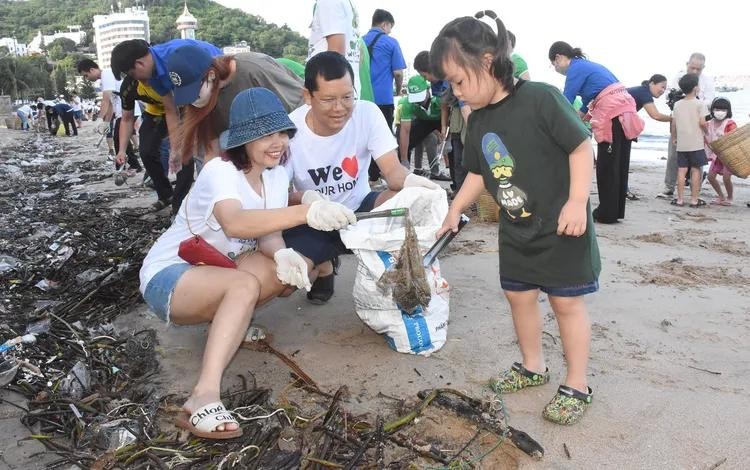
Despite continuous efforts by local authorities, most measures implemented so far remain reactive—focused on cleanup and short-term response—rather than addressing the root causes of the problem. The pressing question now is how the local authorities tackle the issue of marine debris and drifting water hyacinths at their source.
Most recently, the Ho Chi Minh City Department of Science and Technology submitted a proposal to the City People’s Council and People’s Committee, recommending a range of solutions aimed at protecting Vung Tau’s coastline and preventing marine waste from washing ashore.
According to environmental assessments, the beaches of Ba Ria–Vung Tau are struck by two to three waves of marine debris each year, with Bai Truoc Beach among the most heavily affected areas. Each episode can last for an entire week.
These surges typically occur in predictable seasonal cycles, most notably from late May to mid-July, during the southwest monsoon, and again from late August to late October, when the winds shift from southwest to northeast and coincide with high tides.
The waste primarily originates from offshore fishing and aquaculture activities. Common debris includes styrofoam boxes, plastic buoys, fishing nets, light bulbs, plastic trays and containers, bamboo, and timber used in marine operations.
The water hyacinths that wash ashore along Vung Tau’s beaches from May to July each year primarily originate from the Dong Nai–Saigon and Vam Co river systems. From August to October, the majority of the drifting hyacinths come from the Tien and Hau Rivers, with smaller contributions still coming from the Dong Nai–Saigon and Vam Co Rivers, as well as from the Can Gio mangrove forest and other coastal mangrove belts along the Mekong Delta shoreline.
As part of its proposed solutions, the Ho Chi Minh City Department of Science and Technology emphasized the need to control waste at its source. The department called for coordinated efforts with neighboring provinces such as Dong Nai and Tay Ninh to prevent pollution from entering river systems. Meanwhile, localities in the Mekong Delta were urged to reduce upstream waste that eventually flows into the sea.
In addition, localities in Ho Chi Minh City need to organize widespread propaganda for individuals and organizations likely to contribute to plastic pollution in rivers and canals. Measures should also focus on reducing household plastic waste and strictly enforcing environmental regulations against illegal dumping.
The Department of Science and Technology has recommended that Ho Chi Minh City assign the Department of Construction to coordinate with the Department of Agriculture and Environment and other relevant agencies to accelerate the collection of waste in rivers and canals, in accordance with plans previously approved by the City People’s Committee.
Notably, the Department of Agriculture and Environment has been tasked with coordinating with the city’s Border Guard Command and other units to develop an action plan aimed at reducing waste from fishing and aquaculture activities. This includes public awareness campaigns, prioritizing waste control on fishing vessels before departure and upon return to port, and strengthening enforcement.
The department also stressed the importance of preparing equipment and conducting terrain surveys to enable the timely cleanup of debris washing ashore. In the long term, it recommends the development of a monitoring and early warning system to detect incoming marine waste along Vung Tau’s coastline, allowing for more proactive and efficient response efforts.
Recently, Khanh Hoa Province has implemented the installation of a floating trash barrier system at Binh Son Beach in Dong Hai Ward. This initiative is seen as a practical and effective solution to prevent waste originating from the ocean, aquaculture activities, and tourism from drifting ashore.
According to the Khanh Hoa Province’s Department of Agriculture and Environment, Binh Son Beach receives a significant volume, posing a serious threat to the area’s scenic beauty and the overall quality of its coastal tourism.
To address this, a floating trash barrier system has been installed along the beachfront, serving a dual purpose, including ensuring safety for visitors while blocking tons of plastic waste, nylon bags, and floating debris from drifting ashore. The installation of the barrier, along with new regulations on marine environmental protection and public awareness campaigns urging residents and tourism businesses not to litter, is part of a broader strategy that Khanh Hoa Province is implementing to promote green and sustainable tourism.
